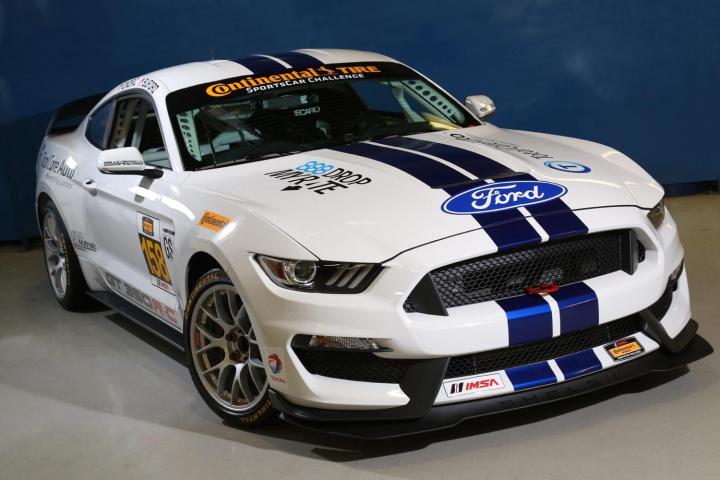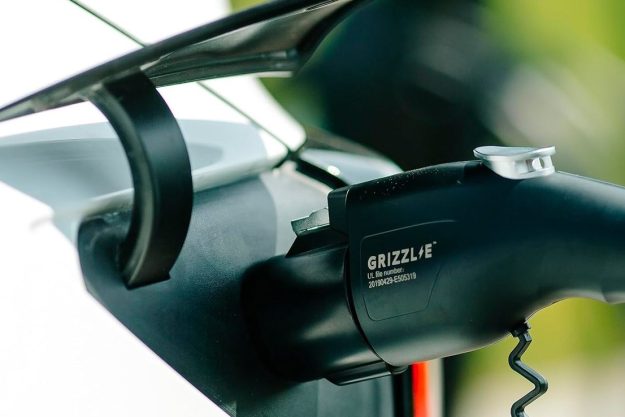
Ford commissioned the first Shelby Mustangs not only to give its pony car a sporty image, but also to stick it to rivals in racing. The recently unveiled 2016 Shelby GT350 and GT350R certainly accomplish the first part of that brief, and now Ford is seeing to the second part.
The Ford Shelby GT350R-C is a racing version of the GT350R that will get its first taste of competition this weekend at Watkins Glen in upstate New York. It’s probably the first race car directly based on the new generation of Mustang to hit the track and, yes, it has racing stripes.
The racer retains most of the stock GT350R’s components, including its 5.2-liter V8 and fully independent suspension. Naturally, some changes had to be made to make the car competitive, including a lower ride height, revised spring rates and antiroll bars, and other tweaks. It’s unclear what the added letter C stands for.
Ford’s latest racing Mustang will compete in the International Motor Sports Association (IMSA) Continental Tire SportsCar Challenge, a series for lightly modified production cars.
The GT350R-C will replace the Boss 302R, which is based on the previous generation of Mustang. Just like in the golden age of muscle cars, the Shelby will face off against the Chevrolet Camaro, plus everything from Aston Martin Vantages and Porsche Caymans to Mazda Miatas and Honda Civics.
Like the original Shelby Mustangs, the GT350R-C will help maintain Ford’s performance credibility, in this case as it rolls out 12 new production models under its new global Ford Performance brand, which replaces regional brands like the Special Vehicle Team (SVT) that used to be responsible for all U.S.-market Ford hot rods.
Editors' Recommendations
- Ford’s electric 1,502-hp Mustang dragster burns tires, not race fuel
- Why Ford chose a dual-clutch transmission for the Shelby GT500 Mustang
- The 2020 Ford Mustang Shelby GT500 thunders into the muscle car ring with 760 hp


